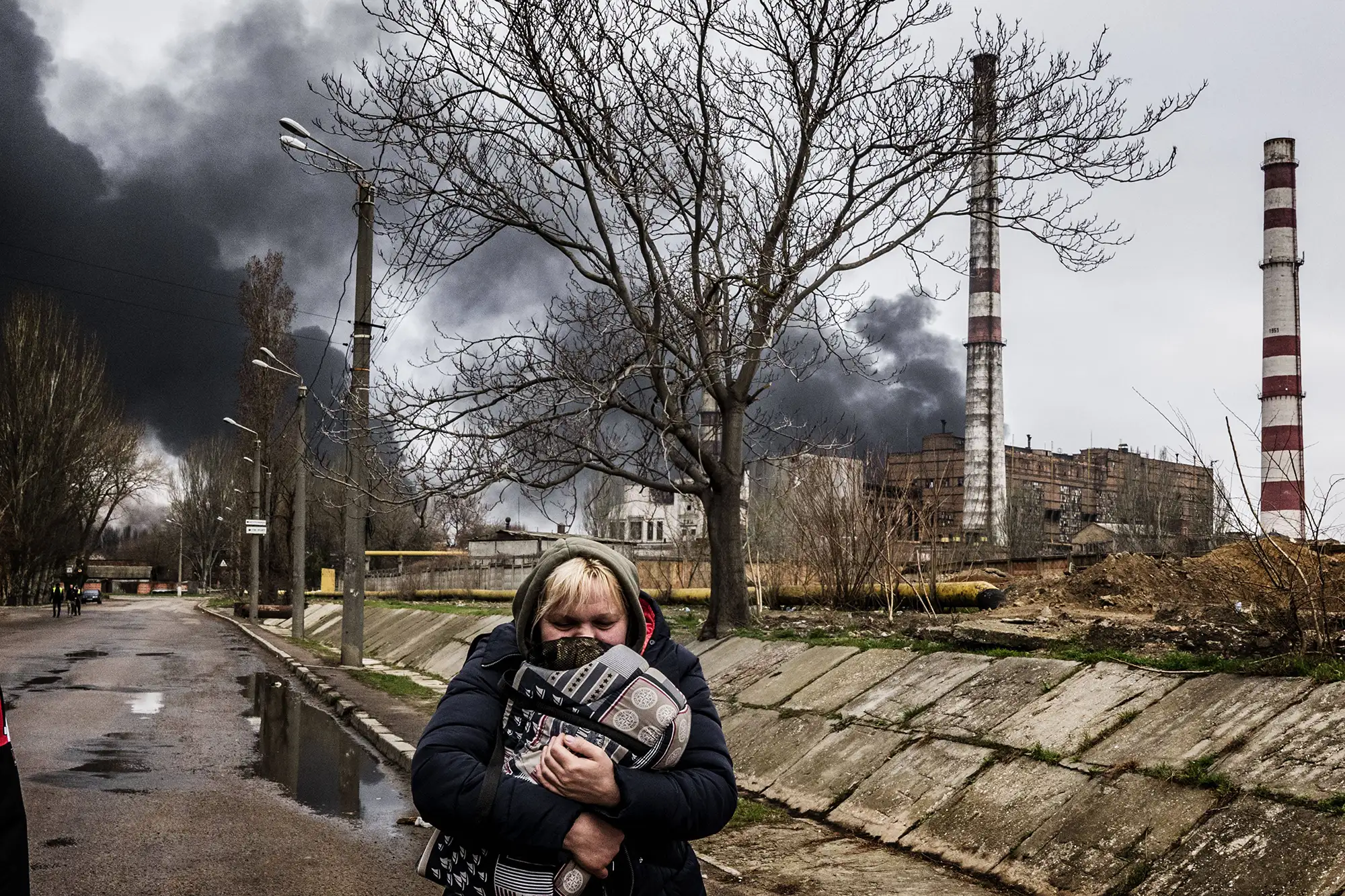Russia’s invasion of Ukraine on February 24, 2022 is causing immense human suffering and loss of life. This war remains equally destructive for the environment, in turn affecting public health, ecosystems, food security and the climate; its consequences will be felt in Ukraine and beyond for decades to come.
On the first anniversary of the full-scale invasion, our organizations are calling on the international community to act now. Our recommendations in this call are aimed at mitigating harm immediately, at preventing further environmental degradation, and at ensuring the future restoration of Ukraine’s environment.
The environmental impact of the invasion
The year-long intense fighting has had acute and far-reaching impacts on Ukraine’s environment and the people who depend on it. The deliberate targeting of industrial and energy infrastructure is causing severe pollution, as has damage and disruption to water and sanitation facilities, affecting people’s health. Cities and towns have been left devastated by the use of explosive weapons, leaving millions of tonnes of contaminated debris. Across Ukraine, natural and agricultural landscapes have been damaged by the fighting, including some of Ukraine’s richest soils, with serious implications for regional and global food security. Important habitats and protected areas were ravaged by military activities, threatening biodiversity. Russia’s military actions in Ukraine have caused disruption of environmental monitoring, protection and governance systems and have undermined the environmental human rights of Ukraine’s people.
The war in Ukraine has highlighted the transboundary and interlinked character of the environment, peace and security. This is clearly demonstrated by the ongoing radiation risks resulting from the unprecedented occupation of nuclear facilities, from how it has exacerbated global fossil energy insecurity, and from the war’s consequences for food exports and for the climate. The environmental damage caused by Russian military aggression in Ukraine is more visible than in other armed conflicts. As we enter the second year of the war, it is vital that the international community translates this visibility into meaningful policy measures and accountability mechanisms to prevent, minimize and address further consequences for the environment and people depending on it.
The recommendations below are proposed to the international community, including international organizations, national governments, and relevant expert organizations, as guidance in addressing the conflict’s environmental dimensions. If implemented, the recommendations will reduce harm to civilians, help prevent further environmental degradation and contribute to the restoration of Ukraine’s environment.
Recommendations
- Strengthen Ukraine’s emergency response capacity. A crucial step to prevent and mitigate serious pollution incidents at hazardous facilities, which includes the repair of damaged critical infrastructure, the clearance of mines and unexploded ordnance, and land remediation measures at affected sites.
- Secure the demilitarization and de-occupation of the Zaporizhzhia Nuclear Power Plant. All actors must refrain from using this facility for military purposes. This is the most effective way to prevent a catastrophic nuclear accident.
- Support ongoing work to identify, document and assess environmental damage and its impact on public health. Stakeholders, including international organizations, academia and civil society are monitoring harm. Improving coordination of this work and complementing it with on-site assessment of contaminated areas and health surveillance is crucial to address current and future environmental and related public health issues. Such foundational work must be systematically supported.
- Humanitarian actors and demining organizations should address environmental factors in their field operations. This should include the identification and integration of environmental risks, as well as the unintended environmental consequences of response operations.
- Develop mechanisms and structures to ensure accountability for the damage to Ukraine’s environment. This includes support for the collection and archiving of evidence, the identification of best practice for environmental reparations, as well as developing the international architecture required for state accountability for environmental damage.
- Ensure Ukraine’s recovery is green and sustainable. With hundreds of billions of dollars already earmarked for the cost of recovery and reconstruction of Ukraine, it is vital that concerns about climate change, biodiversity loss and pollution are considered, and that the reconstruction is carried out in a way that prevents the further degradation of Ukraine’s environment.
- Mainstream environmental protection in military doctrine. With the war ongoing, Ukraine’s military and supporting international actors should ensure that policies aimed at minimizing damage to the environment are integrated into training and planning, and share targeting data, where possible, with relevant authorities and organizations to improve effective environmental response.
- Maintain visibility for the environmental dimensions of the war. States and non-state actors should raise the environmental dimensions of the war in Ukraine in discussions at all relevant multilateral fora and international agreements, and as part of wider exchanges on both the peace and security and protection of civilians’ agendas.
- Address the impact of war on the climate. The war’s direct emissions, and those linked to shifts in regional and global energy supplies, have highlighted the importance of addressing military and conflict emissions in the context of the United Nations Framework Convention on Climate Change, and in debates on climate change and security.
- Develop a global Environment, Peace and Security agenda. This war has highlighted the risks that armed conflicts create for both the local and global environment; lessons must be identified and used to underpin a more coherent and coordinated UN-wide approach to the environmental dimensions of armed conflicts.
Signed by
- PAX
- Conflict and Environment Observatory
- Zoï Environment Network
- ICO “Environment – People – Law”
- Resource & Analysis Center “Society and Environment”
- NGO “Ukrainian Nature Conservation Group”
- Centre for Environmental Initiatives “Ecoaction”
- NGO “Danube-Carpathian Programme”
- Razom We Stand
- CEE Bankwatch
- DIXI Group
- Environmental Law Department of the Ukraine National Association of Attorneys




